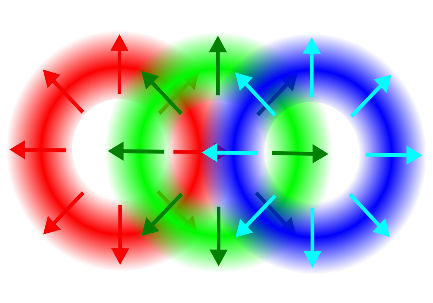Light pulses can be structured in space, time, in polarization and via spatial phase singularities (vortex beams). Such structured pulses have great fundamental interest and practical application.

Space-time structuring of ultrafast light pulses
The structuring of light pulses in space or time has been a common method to achieve desired light-matter interactions. Furthermore, the structuring of the spatial polarization distribution (vector beams) and of spatial phase singularities (vortex beams) allow for even more advanced control and manipulation of physical systems.
New methods are currently being developed to structure multiple dimensions of light pulses at once, creating pulses that cannot be described as separable and require new sophisticated theoretical descriptions. This includes, for example, space-time structuring of ultrashort light pulses: tilting or curvature of the pulse-front relative to the wavefront, separation of the component frequencies along a transverse component, etc. Even such conceptually simple space-time effects are difficult to produce, characterize, and fine-tune.
In the Opera team we are advancing the fundamental theoretical (analytical and numerical) description of how non-separable structured light pulses propagate in free space and within media. We are also investigating how such space-time effects will play a role in different laser-matter interactions, including direct particle acceleration and dynamics in multi-mode optical fibers (the latter having cross-over with the nonlinear photonics work of this group).
We hope that this work will have diverse fundamental interest and will lead to advancements in various area. Besides particle acceleration and multi-mode guided wave optics, this may include coherent control in chemical systems, laser-processing of materials, free-space communication, or optical trapping. We also hope to do our own experiments in the coming months and years.
Contact :
Pascal KOCKAERT
